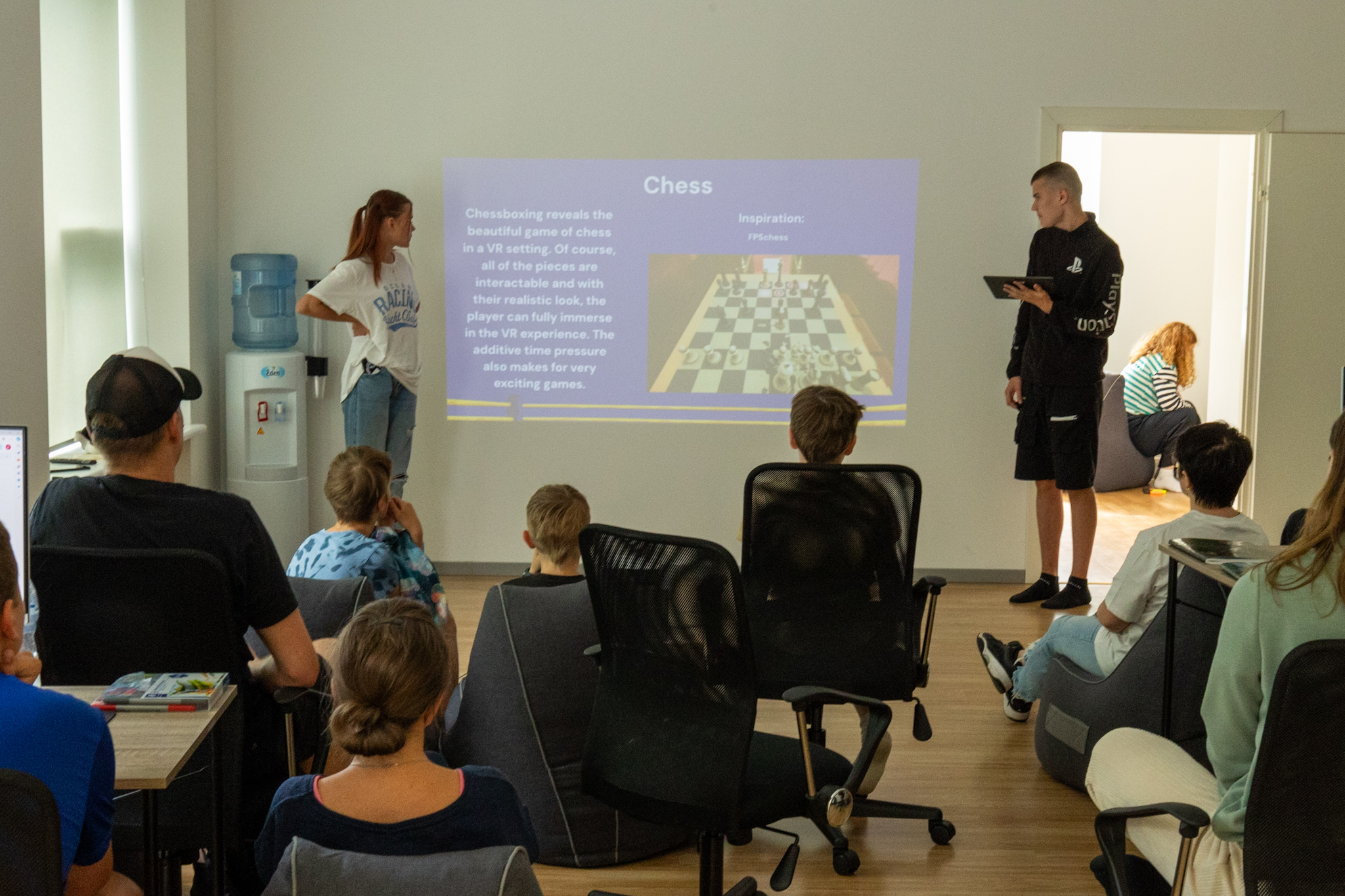3D modeling is a strategically important skill in today’s digital era, fostering teenagers’ creative and analytical thinking, precision, patience, and digital competence. This course explores the intersection of art, design, and technology, giving students foundational knowledge and practical skills that can serve as a base for further education or professional work in game development, animation, architecture, or product design.
About the lessons:
Duration – 90 minutes. Each session begins with a 30-minute lecture and demonstration of modern modeling techniques, providing theoretical foundations and contextual knowledge. This is followed by a 50-minute practical segment, where students work individually or in teams on projects in Blender. The session concludes with structured presentations, during which participants receive constructive feedback and engage in discussions about different approaches. Students are given significant creative freedom in project selection and execution, encouraging independence and responsibility.
Group size:
Up to 8 students per group to ensure high-quality individual support. The instructor acts as a mentor, encouraging self-expression, experimentation, and the development of a personal creative style. This approach allows for in-depth work on each participant’s unique project and ensures purposeful growth.
Technology and equipment:
Lessons take place in a specialized environment equipped with high-performance computers and professional graphics cards that support complex 3D modeling and animation rendering. Workstations feature ergonomic chairs, height- and tilt-adjustable monitors, and optimized lighting for extended, focused work, ensuring physical comfort and eye protection.
Curriculum:
The program is designed according to a constructivist approach, ensuring targeted development of knowledge and skills. The learning process integrates creative thinking, digital technologies, and project-based learning. Emphasis is placed on self-directed exploration, problem-solving, and visual communication skills. Students create a portfolio that reflects their individual progress and personal design approach.
Program content:
-
In-depth learning of Blender – advanced tools, modifiers, and workflow optimization
-
Modeling complex organic and mechanical objects with a high level of detail
-
Material systems and texture creation – designing realistic surfaces and finishing effects
-
Professional lighting and camera settings for scene composition
-
Introduction to basic animation – object movement, frame planning, and simple actions
-
Development of individual portfolio projects, combining technical and creative skills
-
Group projects and a final presentation with constructive feedback and reflection on future development opportunities



